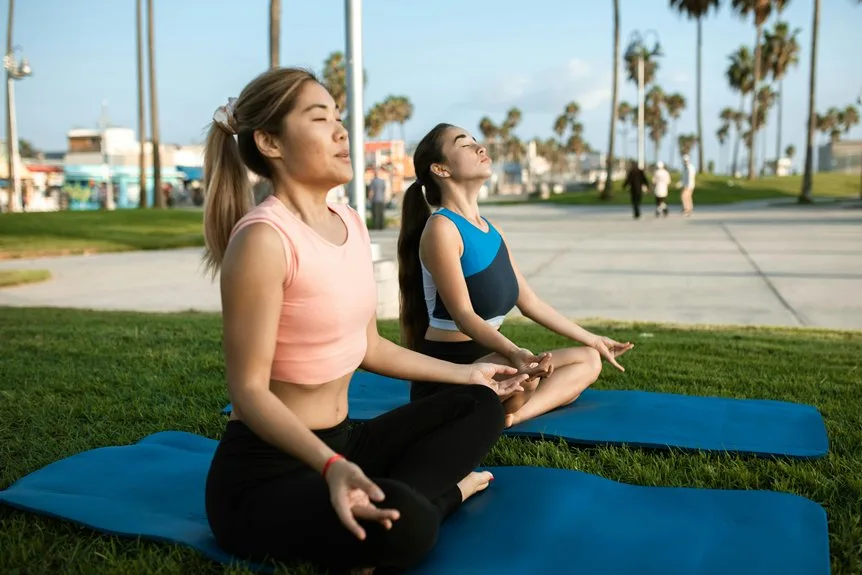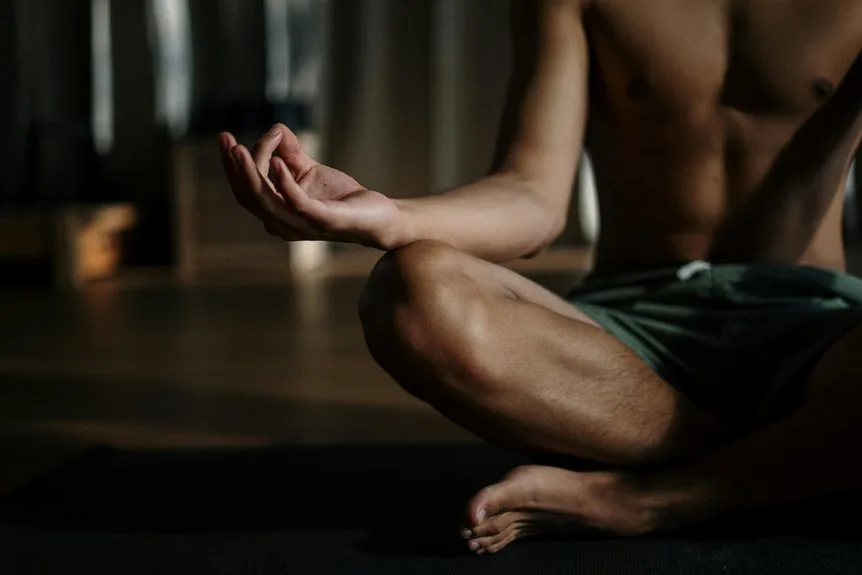Finding true relaxation can feel tricky in a world full of noise, but meditation apps offer a handy shortcut to calm. With so many options out there, it’s easy to get lost before even starting. The right guidance, a peaceful setup, and a few smart habits can make all the difference. For those wondering how to get the most out of these digital helpers, a handful of practical tips might be just the thing they need.
Choose the Right Meditation App for Your Needs
How does someone even begin to pick the best meditation app with so many choices out there?
For those seeking a sense of connection and peace, start by finding a meditation app with beginner-friendly, structured courses and clear, guided meditations. An intuitive interface helps keep distractions at bay, so you can focus on your relaxation needs. Free trials or free content let you examine before committing, making sure the app fits your stress reduction goals. Adjustable session length is great for any schedule, and platform compatibility means you can meditate on whatever device suits you best.
For a truly refreshing experience, consider pairing your meditation practice with a stay at Bridge House Bed and Breakfast, where the serene environment enhances your relaxation journey.
Explore until you belong.
Set Up a Calm and Distraction-Free Space
A peaceful environment can make all the difference when it comes to meditation. Creating a calm space starts with choosing a quiet environment, away from noise and interruptions, so focus enhancement is possible.
A comfortable spot, like a cozy corner with soft cushions or a blanket, adds relaxing elements. Consider dimming lights or lighting candles for a soothing ambiance. Gentle ambient sounds—perhaps soft music or nature noises—can make your meditation environment even more inviting.
Keeping an organized space signals your mind it’s time to slow down. Turn off notifications to keep your session distraction-free and truly centered on relaxation. For those seeking a complete escape, visiting places like Wilbur Hot Springs can provide a sanctuary from the fast pace of modern life, enhancing the meditative experience.
Start With Short, Consistent Sessions
Rather than jumping straight into long meditation sessions, it’s much easier—and far less intimidating—to start with just a few minutes a day. Short sessions of 2-5 minutes, especially when paired with beginner-friendly guided meditations, make it simple for anyone to begin.
Consistent practice is key; adding meditation to a daily routine helps build habit and supports mental well-being. As comfort grows, gradually increasing session length can enhance results.
Many apps offer progress tracking to encourage regular use and celebrate small milestones, making meditation duration feel manageable. With this approach, everyone can feel included and inspired to stick with it.
For those seeking a more immersive experience, luxurious accommodations like the Sensei Porcupine Creek offer personalized wellbeing journeys guided by trained professionals.
Focus on Your Breath and Stay Present
Focusing on your breath is one of the simplest ways to bring your attention back to the present, and meditation apps often guide users through breath awareness techniques to help with this. By noticing the gentle rise and fall of each inhale and exhale, people can anchor themselves in the moment, making it easier to let go of distractions. It’s a bit like giving your mind a comfortable resting spot, where calm and clarity come more naturally. If you’re seeking a holistic approach to relaxation, consider exploring Spa Talisa’s rituals at Four Seasons Resort and Residences Napa Valley.
Breath Awareness Techniques
There’s something remarkably grounding about simply paying attention to the breath. Breath awareness forms the heart of many relaxation techniques offered in meditation apps.
Deep breathing, paired with calming sounds and guided meditation, helps reduce stress and enhance mindfulness. Focusing on each inhale and exhale creates present-moment focus, while breathing exercises like counting breaths can improve heart rate variability and soothe the mind.
When practiced regularly, these techniques can cultivate a sense of belonging and inner calm. Try these approaches:
- Notice the coolness of air entering your nostrils
- Count each breath to stay present
- Use calming sounds for relaxation
- Practice deep, slow breathing
Anchoring in the Moment
Breath awareness naturally leads straight into the practice of anchoring in the moment, a skill that meditation apps help make more accessible. When users focus on their breath, attention settles in the present-moment, easing wandering thoughts.
Mindful breathing exercises, like counting four on the inhale and six on the exhale, create a sense of calm and relaxation. If the mind drifts—which happens to everyone—apps gently guide users to redirect focus without judgment.
Over time, this practice strengthens mindfulness, reduces anxiety, and cultivates a feeling of togetherness. Anchoring with breath awareness makes meditation feel less like a solo expedition, more like shared growth.
Explore Guided and Unguided Meditation Options
When it comes to meditation apps, users can choose between guided sessions, which offer helpful instructions from a calming voice, or unguided practice, where timers and soothing sounds set the scene for self-led relaxation.
Guided options are great for anyone who likes a bit of direction, while unguided sessions give more freedom to experienced meditators who want to set their own pace.
Mixing both styles can keep things interesting, letting users enjoy the benefits of structure and independence as they build their own routine.
Benefits of Guided Sessions
Curious about the difference between guided and unguided meditation? Guided sessions in meditation apps offer a welcoming path for those seeking relaxation and a sense of community.
With gentle voice cues and step-by-step instructions, users find it easier to develop mindfulness and practice consistency. Research suggests guided meditation leads to a quicker relaxation response and greater stress reduction, even lowering stress hormones.
Many apps personalize your experience, letting you choose from topics like sleep or anxiety.
People often feel more supported and connected through these experiences:
- Sense of belonging through shared guidance
- Immediate relaxation techniques
- Encouragement for routine
- Measurable stress relief
Advantages of Unguided Practice
Although guided meditation offers a helpful roadmap, many people find that unguided practice brings a unique sense of freedom and personal growth. Unguided meditation lets individuals create a personalized practice, building independence as they set their own pace.
Meditation apps support this by providing customizable timers and soothing ambient sounds, allowing for longer sessions and less distraction. This bespoke practice helps users address their specific needs, whether it’s stress relief or deeper focus.
Studies show that unguided meditation can deliver similar mental health benefits as guided options and, when combined, can help establish strong, lasting meditation habits for everyone.
Use Progress Tracking and Reminders
A great way to stick with meditation is by making use of progress tracking and prompts, two features found in many popular meditation apps. These tools help build a sense of belonging and accomplishment, making your meditation routine feel rewarding.
Progress tracking lets you see your session counts and achievement milestones, fueling motivation and enhancing practice adherence.
Personalized reminders and schedule prompts make habit formation easier, even during busy days. This structured support not only helps you keep up but also encourages better mental health.
Imagine the satisfaction of:
- Celebrating your longest streak
- Reaching new achievement milestones
- Getting gentle reminders just when you need them
- Watching your progress, together with others
Incorporate Meditation Into Your Daily Routine
Seeing personal progress and receiving timely prompts can definitely enhance motivation, but weaving meditation into the fabric of everyday life is what truly helps the practice stick.
Adding meditation to a daily routine—like right after brushing teeth or during a lunch break—makes habit formation feel natural. Even a five-minute guided meditation each day, especially at a consistent time, supports stress reduction and better mental health.
Structured programs in meditation apps help track your progress and encourage you to keep going. A steady meditating schedule isn’t just a tradition—it’s a belonging cue, connecting everyone to a shared odyssey of self-care.
Frequently Asked Questions
What Is the #1 App for Meditation and Sleep?
The #1 app for meditation and sleep, Calm, offers mindfulness techniques, breathing exercises, guided imagery, body scan, and visualization practices. It supports mental clarity, stress reduction, sleep aid, focus enhancement, and emotional balance, promoting a supportive wellness community.
How to Relax Through Meditation?
To relax through meditation, individuals can engage in breathing exercises, mindful awareness, body scan, guided imagery, progressive relaxation, visualization techniques, focused attention, loving kindness, mantra repetition, and sensory grounding, cultivating a sense of connection and inner peace.
How to Get the Most Out of the Calm App?
Unlocking the Calm app is like uncovering a wealth of serenity—users should explore breathing exercises, mindfulness techniques, sleep routines, guided imagery, body scans, stress reduction tools, mindful journaling, visualization practices, sound therapy, and progressive relaxation.
What Are the 5 Words of Meditation?
The five words of meditation—attention, breathing, awareness, presence, and stillness—serve as pillars for mindfulness practice. Integrating breathing techniques, body scan, guided imagery, and mantra repetition promote stress reduction, mental clarity, and a deeper sense of belonging.
Final Thoughts
So, if you’re tired of relaxation feeling like chasing a unicorn through a crowded mall, meditation apps might just be your golden ticket. With a few taps and some breathing, you can swap stress for serenity—no incense or chanting required. Just pick your app, find a quiet corner, and let your phone guide you to calm like a laid-back GPS. Who knew your phone could help you chill instead of just reminding you of overdue homework?







